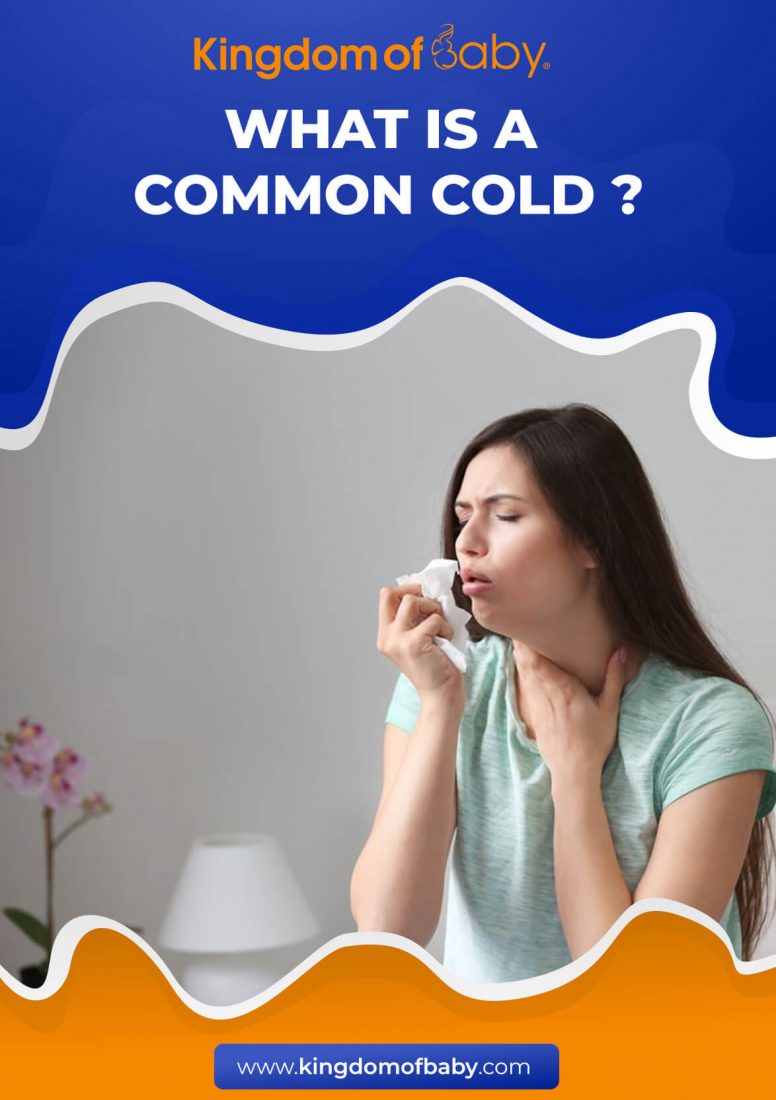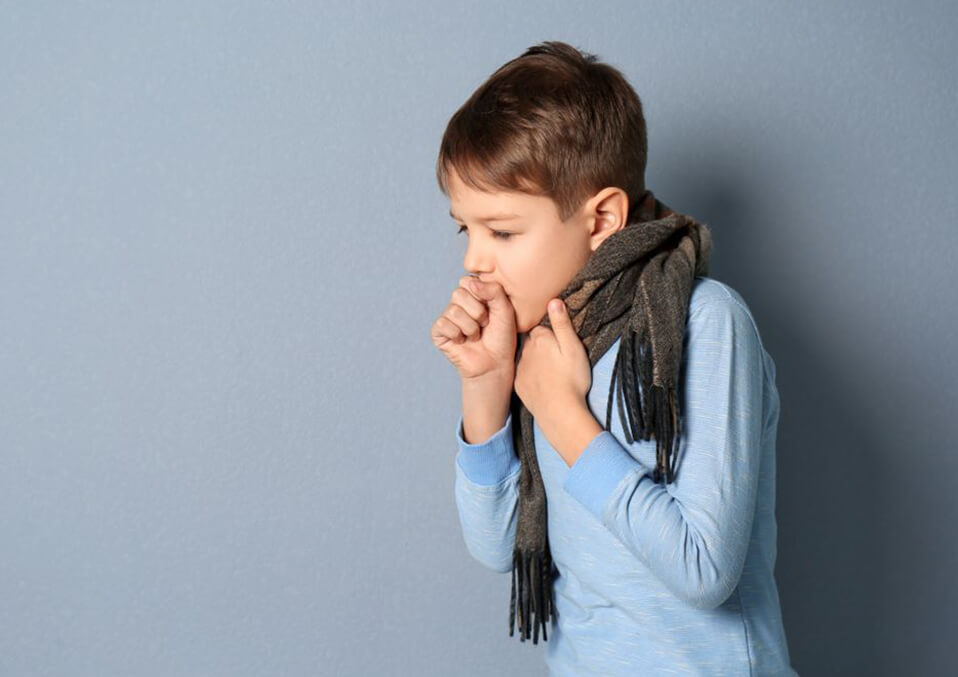
The common cold is an infectious virus infecting the upper respiratory system. It is also commonly referred to as acute rhinopharyngitis and acute coryza. Cold is a nose, ear, and throat-related viral inflammation. It can trigger the common cold, and more than 200 kinds of viruses exist.
Colds usually last a couple of days and are generally not dangerous. They can, however, lead to other infections, particularly in children.
Young children, such as those under 3, often catch colds as adults due to the unfamiliarity of their immune systems. You can get cold one after the other because so many viruses circulate. The cold is not the same as influenza or flu. Another disease triggers influenza A or B. Flu is far more severe than cold and can endanger life.
How does it start?

You can take it from someone who has the virus infection. It may occur through immediate touch with a cold person or by pressing an area contaminated with their germs— like a computer keyboard, a door button or a spoon— and then tapping your nose or mouth. You can also capture it from infected snow or cough bubbles in the atmosphere.
Read also: Quitting smoking while pregnant
Cold starts when a virus sticks to the nose or throat lining. To combat this invader, your immune mechanism–a body defending itself against germs–dispatches white blood cells. Except if you have a run-in before, the original assault may collapse, and your body will send reinforcements. Your nose and throat are swollen, and mucus is high. You are tired and miserable with much of your energy to fight the cold virus.
What are the conditions of the common cold?

While many varieties of viruses are expected to induce a common cold, rhinoviruses are the principal culprit. A cold virus enters your mouth, eyes, or nose in your body. The infection may spread in the air when somebody who is sick is coughing, sneezing, or talking.
It is also disseminated engaging face-to-face associations with people who are cold or who share infected objects, such as utensils, towels, toys, or phones. If following contact or vulnerability, you touch your eyes, nose, or mouth, you are likely to develop a cold.
What are the typical common cold symptoms?

The common cold symptoms are the body’s cold virus response. It causes the discharge of chemicals and leaks blood vessels and makes the mucous glands more challenging to operate.
The most well-known cold symptoms are:
- Dry throat
- Sore throat
- Cough
- Fever
- Sneezing
- Heavy voice
- Nose blocked
- Headaches
Some people have no symptoms when infected by the cold virus, maybe because their immune systems react differently to the illness. Sometimes, during this viral infection–known as secondary bacterial infection-bacteria can infect the ears or sinuses and can be treated with antibiotics.
What are the typical risk factors and complications of a common cold?

These circumstances can boost your probability of cold:
- Age
Kids under 6 are most at danger for colds, principally if they consume time in childcare surroundings.
- The immune system is weakened
Your danger raises with a chronic disease or otherwise weakened immune system.
- Time
In the autumn and winter, both children and adults are more prone to cold, but you can get cold anytime.
Read also: Why period cramps occur and how to relieve them
- Smoking
If you are subjected to cigarette smoke, you are more probable to get cold and have more severe frost.
- Exposure
You are most probable to be subjected to viruses that trigger colds if you are around many individuals, like at college or on an aircraft.
- Acute ear infection
It happens when bacteria or viruses enter the room behind the eardrum. The usual indications and manifestations comprise of earaches and, in some occurrences, a yellow nose release or a fever back after a common cold.
- Asthma
An asthma attack may be triggered by a cold.
- Increased sinusitis
In adolescents or kids, an unresolved cold can contribute to inflammation and sinus infection (sinusitis).
- Additional secondary diseases
These include strep throat, pneumonia, and croup or bronchiolitis in children. A physician must handle these infections.
How do you evade acquiring a cold?
Certain precautions can help prevent the common cold. They include:
- Avoid contacting anyone who has a cold infection.
- To help the immune system stay active, eat plenty of fruit and vegetables rich in vitamins.
- Make sure it is made into a tissue when sneezing or coughing. Throw out your cloth and wash your hands carefully.
- You must immediately wash them with soap and water if you sneeze in your own hands.
- Cough in the interior (crook) of your elbow rather than the hand if you do not have a tissue or a hand-pulley.
- Cold viruses can be passed on from one person to another by touch. Wash your hands regularly. More germs are passed through shaking hands than kissing.
- Keep your surfaces clean in your home, in the kitchen and bathroom in particular.
- Avoid touching your face and mouth in particular.
What are the remedies of a common cold?
These remedies can assist you to feel better in addition to having enough sleep.
- Stay hydrated
Water, juice, light broth or hot honey lemon water loosens and dehydrates congestion. Avoid liquor, tea, and sodas that can exacerbate dehydration.
- Ease a sore throat
A gargle of saltwater— one quarter to a half teaspoon of salt, engulfed in an 8-unce bottle of hot water— can instantly relieve a sore or scratchy throat. Children less than six years of age are unlikely to gargle correctly.
Ice chips, sore throat sprays, tablets, or hard candy may also be tried. Use caution when offering kids lozenges or hard candy, as they can shock them. Don’t provide kids less than six years old lozenges or hard candies.
Read also: Bath after c section and its benefits
- Combat stuffiness
Saline nasal drops and sprays over-the-counter can assist in alleviating stuffiness and congestion. In babies, specialists suggest that several saline drops be placed in one nose and that the nose with a bulb syringe is sucked softly. Squeeze your bulb, place the syringe tip gently around 1/4 to 1/2 inch (around 6 to 12 millimeters) in your nose and release the bulb sluggishly. In elderly kids, saline nasal sprays may be used.
- Decrease pain
Give the only acetaminophen for kids six months or older. Also, you can give either acetaminophen or ibuprofen for children older than six months. Ask your child’s doctor about the right dose for the era and weight of your child. Adults may take acetaminophen, ibuprofen (Advil, Motrin IB, others), or aspirin.
- Sip hot liquids
A cold solution used in many countries for hot liquids like chicken soup, tea, or warm apple juice could be a relaxing solution and could relieve congestion by enhancing mucus flow.
Takeaway
Most colds last about 7 to 10 days, but you might need to call your doctor if your symptoms persist. Colds sometimes contribute to bacterial infections in your lungs, sinuses, or eyes. If so, your doctor may prescribe antibiotics that operate against bacteria, but not viruses.
Read also:
- Can Pregnant Women Eat Honey?
- Pregnancy Symptom: Reasons why Pregnant Women Snore
- All You Need To Know About Ear Popping During Pregnancy


